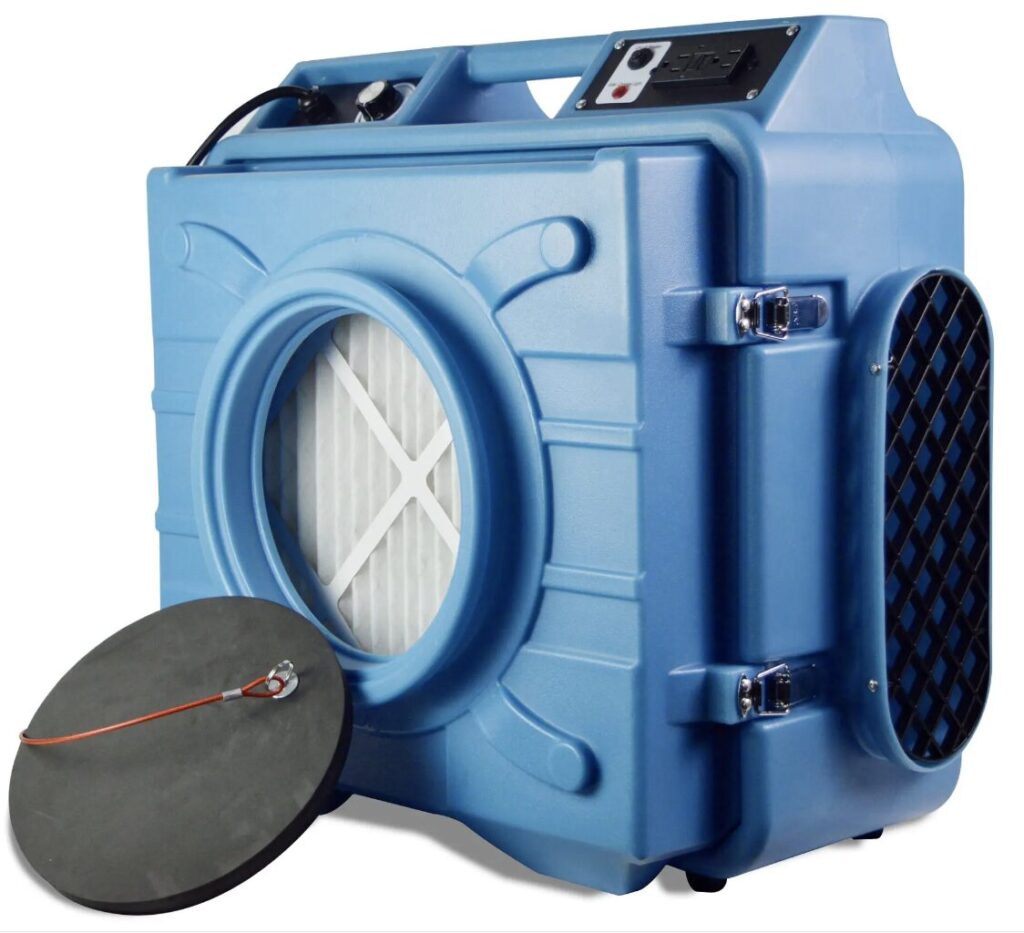
How Air Scrubbers Improve Overall Air Quality: Top Benefits And Signs You Need One
How Air Scrubbers Improve Overall Air Quality: Top Benefits And Signs You Need One
By: Brothers Equipment And Supply
In an era where air pollution is an ever-growing concern, ensuring clean and healthy indoor air is of paramount importance.
One effective solution to combat poor indoor air quality is the use of air scrubbers.
In this article, we will delve into what air scrubbers are, their top five benefits, and the signs that indicate you may need to install one.
We’ll also explore the telltale signs of poor air quality, ways to improve air quality, interesting facts about indoor air quality, and answer the top ten frequently asked questions about enhancing indoor air quality.
What Is An Air Scrubber?
An air scrubber, also known as an air purifier or air cleaner, is a device designed to remove contaminants from the air in a closed space.
These contaminants can include dust, allergens, smoke, odors, bacteria, viruses, and volatile organic compounds (VOCs).
Air scrubbers work by drawing in the indoor air, passing it through a series of filters or cleaning mechanisms, and then releasing the purified air back into the room.

Top 5 Benefits Of Air Scrubbers
1. Improved Air Quality
The primary benefit of an air scrubber is its ability to enhance indoor air quality significantly.
It effectively removes harmful particles, allergens, and pollutants, ensuring the air you breathe is clean and safe.
2. Healthier Environment
Air scrubbers can help reduce the risk of health issues caused by poor air quality, such as allergies, asthma, and respiratory infections.
They are particularly beneficial for individuals with pre-existing respiratory conditions.
3. Odour Elimination
Air scrubbers can eliminate unpleasant odors caused by cooking, pets, smoking, or chemical off-gassing, leaving your home smelling fresh and clean.
4. Increased Comfort
With cleaner air, you’ll experience improved comfort and well-being.
Breathing fresh air can lead to better sleep, increased focus, and an overall sense of wellness.
5. Energy Efficiency
Many modern air scrubbers are energy-efficient and can seamlessly integrate with your HVAC system.
This not only saves energy but also ensures consistent air purification throughout your home.
Top 10 Signs You Need an Air Scrubber
1. Persistent Allergy Symptoms
If you or your family members suffer from constant allergy symptoms, such as sneezing, congestion, or itchy eyes, it could be due to poor indoor air quality.
2. Musty or Stale Odours
Lingering musty or stale odors, despite thorough cleaning, may indicate the presence of hidden pollutants or contaminants in your home.
3. Visible Mold Growth
If you notice mold growth on walls, ceilings, or around your HVAC system, it’s a clear sign of excess moisture and poor air quality.
4. Increased Dust
Excessive dust accumulation on surfaces, even shortly after cleaning, suggests a high concentration of particulate matter in the air.
5. Frequent Illness
If you or your family members frequently suffer from colds, flu, or respiratory infections, it could be linked to contaminated indoor air.
6. Worsening Respiratory Issues
Individuals with asthma or other respiratory conditions may experience worsening symptoms when exposed to poor indoor air quality.
7. Condensation on Windows
Condensation on windows in cold weather can indicate high humidity levels, which may lead to mold growth and discomfort.
8. Inadequate Ventilation
Poorly ventilated spaces, such as bathrooms and kitchens, can trap pollutants indoors, leading to compromised air quality.
9. Unexplained Fatigue
Feeling unusually tired or fatigued when spending time indoors may be a sign of inadequate ventilation and poor air quality.
10. Chemical Odours
Strong chemical odours from cleaning products or building materials can indicate the presence of volatile organic compounds (VOCs) that can be harmful when inhaled.

Top 10 Signs Of Poor Air Quality
1.Visible Mold or Mildew
Mold growth on surfaces is a clear indicator of poor air quality and excess moisture.
2. Excessive Dust
Consistent dust buildup suggests a high concentration of airborne particles.
3. Unpleasant Odours
Lingering or unusual odours can signal the presence of pollutants or contaminants in the air.
4. Respiratory Symptoms
Frequent coughing, sneezing, or wheezing may be linked to allergens or irritants in the air.
5. Dry or Irritated Skin
Low humidity levels can lead to dry, itchy skin and respiratory discomfort.
6. Condensation
Condensation on windows or walls can indicate high humidity and inadequate ventilation.
7. Frequent Headaches
Poor air quality can contribute to headaches and fatigue.
8. Decreased Cognitive Function
Studies suggest that indoor air pollution can impair cognitive function and productivity.
9. Eye and Throat Irritation
Red, watery eyes and a scratchy throat may result from exposure to pollutants.
10. Increased Absenteeism
Poor air quality in workplaces or schools can lead to higher absenteeism rates due to illness.
Top 5 Ways To Improve Air Quality
1. Use Air Scrubbers
Invest in a high-quality air scrubber to remove pollutants and contaminants from your indoor air.
2. Ventilation
Ensure proper ventilation by using exhaust fans, opening windows, and maintaining a healthy airflow throughout your home.
3. Regular Cleaning
Keep your home clean and dust-free by dusting, vacuuming, and washing bedding and curtains regularly.
4. Control Humidity
Maintain optimal humidity levels (around 30-50%) to prevent mold growth and respiratory discomfort.
5. Limit VOCs
Choose low-VOC or VOC-free paints, cleaning products, and building materials to reduce chemical pollutants indoors.
Top 10 Interesting Facts About Indoor Air Quality
1. Indoor Air Pollution
Indoor air can be two to five times more polluted than outdoor air, according to the U.S. Environmental Protection Agency (EPA).
2. Chemical Exposure
The average American spends approximately 90% of their time indoors, where they may be exposed to various chemicals and pollutants.
3. Asthma Triggers
Common indoor asthma triggers include dust mites, pet dander, mold, and tobacco smoke.
4. Plants for Air Quality
Some indoor plants, such as spider plants and peace lilies, can help improve air quality by removing toxins.
5. HEPA Filters
High-efficiency particulate air (HEPA) filters can capture particles as small as 0.3 microns, including allergens and fine dust.
6. Carbon Monoxide Risk
Poorly maintained gas appliances can lead to carbon monoxide leaks, a silent but deadly threat to indoor air quality.
7. Sick Building Syndrome
Prolonged exposure to indoor air pollution in workplaces or homes can lead to sick building syndrome, causing various health issues.
8. Airborne Germs
Airborne transmission of infectious diseases, such as the flu and COVID-19, is a growing concern for indoor spaces.
9. Chemical Off-Gassing
New furniture and building materials can release volatile organic compounds (VOCs) into the air, contributing to poor indoor air quality.
10. Regular Maintenance
Routine maintenance of HVAC systems, air ducts, and air scrubbers is essential to ensuring effective air purification.
If you have any questions about our article, “How Air Scrubbers Improve Overall Air Quality: Top Benefits And Signs You Need One” or need to buy air scrubbers, contact us on LiveChat, social media or at sales@brothers-equipment.com.
Related Posts
What Are The Top Air Scrubber Benefits And Main Uses?
How To Get Dust Out Of The Air After Construction Work
Air Scrubbers Vs. Air Purifiers: Understanding The Differences And Benefits
